
Eighteen months ago, some time in the early part of 2008, speculation began to do the rounds on who would succeed S Ramadorai as the chief executive of Tata Consultancy Services, India's largest information technology company.
Ramadorai had been its public face for many years. But he was turning 65 in 2009, which is the retirement age for all Tata chief executives. A successor had to be found in time.
Several names began to do the rounds, including that of Wipro veteran Vivek Paul. But those who worked with the company and research analysts had a clear idea which way the wind was blowing.
TCS also stood for 'Take Chandra Seriously', they said. They were not off the mark. Natarajan Chandrasekaran (called Chandra by colleagues and friends) will take over as the managing director and chief executive officer from Ramadorai on October 6.

There were indications that Chandrasekaran, who is currently the chief operating officer and executive director of the company, was indeed the chosen one. For instance, he began to interact with the media more than a year ago.
On his part, Ramadorai, who will become vice-chairman of the company he nurtured for almost 13 years, says: "I spotted him (Chandrasekaran) way back in 1996, and knew that he had the potential."
TCS, to be sure, has over the years spawned many worthy candidates. But they all left in the last few years, clearing the way for Chandrasekaran.
Prominent among them were Ravi Gopinath, who was the head of engineering and industrial services for nearly 13 years and joined Geometric Software as chief executive in 2006, and Arup Gupta, who was president (North America) when he resigned in 2005 to join Polaris Software as president and chief operating officer.
"Leadership decisions are not taken by flipping a coin," remarks Ramadorai. While narrowing down on Chandrasekaran, Ramadorai was particularly endeared by his "young, energetic and confident personality."
He agrees there were other contenders as well for the job but some names got dropped along the way and a few left the company.
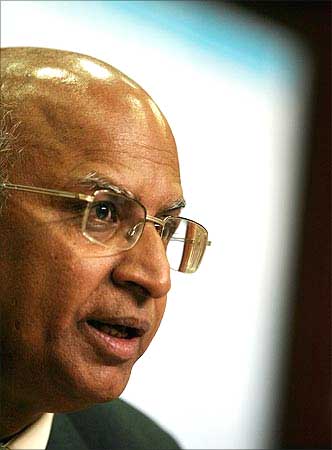
"At the appropriate time, we then communicate the decisions to the team leaders concerned. We add responsibilities to lend more weight to a particular role or censor them in case we feel a leader is not up to the mark."
Chandrasekaran was one of the best kept secrets in the TCS citadel - he was identified for the CEO's role close to five years ago, insist analysts. "However, his public role has been apparent only in the last 18 to 24 months," says Acc-endia Consulting Principal Analyst Alok Shende.
"Indeed, the transition was well planned, and we did have an inkling about it 18 months back," adds Forrester Senior Analyst Sudin Apte.

Chandrasekaran joined TCS on January 27, 1987, after graduating from the Regional Engineering College, Trichy. He started out with Mumbai as his base and did stints in California, Stockholm and the United Kingdom.
In 1993, he moved to the US where he built a new team from scratch. It's here that he learnt about team building and customer management. He grew a telecom company into TCS' top five global customers.
Chandrasekaran cut his teeth as a programme director. In this role, he led a number of firsts, particularly in the acquisition and execution of transformation projects in verticals such as banking and telecom and in markets as diverse as the US and Australia. As programme director, Chandrasekaran had considerable scope to navigate the business in the direction which it is now following.
After this, for two full years, 1997 to 1999, he worked as Ramadorai's executive assistant. It was here, many insiders say, that Chandraskeran was silently groomed under the watchful eyes of Ramadorai.
In 1999, he started the e-business unit of TCS and grew it to a business unit of over $500 million in four-and-a-half years. After this, he was made the head of global delivery at Mumbai, which was then TCS' largest delivery centre.

In July 2005, came another promotion - he now became the head of global sales and operations. By then, his position had become very strong. Ramadorai had walked him through all the key functions - customer management, operations, expansions and so on. He was ready for the next level.
On September 6, 2007, Chandrasekaran was co-opted on the TCS board and named the chief operating officer of the company. This took his job to a different orbit. As the TCS COO, he drove the company's acquisition strategy - the acquisition of Citigroup Global Services for $500 million is credited to him.
Chandrasekaran, says Shende, has "also been known to be nuanced on the deals that TCS should be involved with and the one where it should not. For example, TCS had the first right of refusal on the Telenor Unitech deal. However, Chandrasekaran rejected the offer owing to the low price. The deal eventually went to Wipro."
In April 2008, TCS reorganised its global operations. The company has nearly 140,000 employees. Still, it needs a structure that allows it to build a nimble organisation to capture new growth opportunities. Not an easy task.
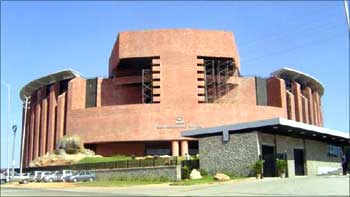
The new model divided the operations of the company into five groups - industry solutions, major markets, new growth markets, strategic initiatives, and organisational infrastructure.
The architect of the new structure of course was Chandrasekaran. Each of these groups had a director who began reporting to Chandrasekaran. The message was not lost on observers.
Chandrasekaran sees it more as an efficiency enabler. TCS, according to him, worked on the restructuring for nine months. "The modular structure simplifies our interface with customers and drives agility in all areas of operations," he explains.
Chandrasekaran is the third in the line of TCS CEOs after F C Kohli and Ramadorai. His predecessors were industry heavyweights and the promoter, the Tata group, gave them a free hand to manage the affairs of the company.
This distinction is important because TCS' peers including Infosys Technologies, Wipro and HCL Technologies all have promoters or large shareholders in executive positions. There's a strong ground to speculate that the next generation will take over HCL and Wipro eventually as opposed to the transition at TCS.
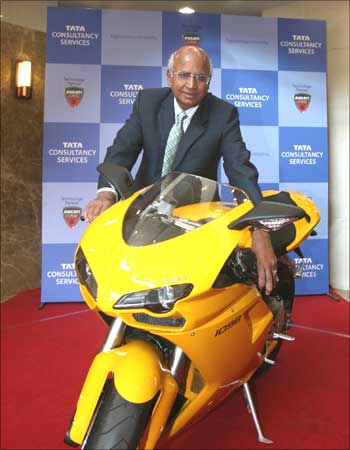
Ramodorai and Chandrasekaran were born almost 20 years apart. And though Ramadorai has mentored Chandrasekaran for well over a decade, they are not cast in the same mould.
Ravi Viswanathan, the head of TCS' global telecom business unit and a veteran of 20 years with the company, says: "Both Ramadorai and Chandrasekaran have elephantine memories.
They remember numbers, facts and data with ease. Ramadorai is a tremendous motivator, subtly makes you do things, is relentlessly persuasive, and will make you work on a problem rather than solve it for you. He (Ramadorai) works on your pysche."
Viswanathan recalls the time when he was the country manager for Scandinavian operations and had some "bad news regarding the operations in Denmark" but was reluctant to divulge it to Ramadorai.
"However, when we were together in the lift, Ramadorai asked: 'Is that all? Why are you hesitating to give the bad news? I would always like to hear any bad news from you first rather than from others.'" The conversation that began in the lift lasted three hours.
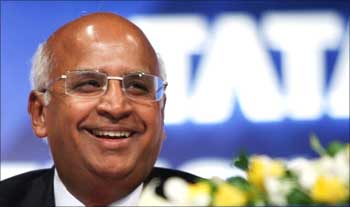
While Ramadorai takes copious notes during meetings, Chandrasekaran uses information technology a lot - presentations and so on. But both are approachable. Chandrasekaran can connect with customers and translate their problems into real solutions, adds Viswantahan.
Abid Ali Neemuchwala, the head of TCS' BPO services & process excellence, has been mentored by Chandrasekaran. And he knows the two are not the same person.
"Ramadorai is a man of few words. Chandrasekaran, on the other hand, goes into details. Ramadorai built the company from an almost entrepreneurial set-up to what it is today. Chandrasekaran is taking it to new heights by covering more ground," says he.
Chandrasekaran's love for data and analytics shows up when he talks. "My immediate focus is to get the growth rates up, and ensure organic growth. We will focus on non-linear (other than mere headcount) initiatives which we hope will achieve critical mass over the next 12 to 24 months," says he.
"TCS has a strong client focus, and we will work towards offering full services (from BPO to IT services) to all our clients, and hence increase our margins. We will also look at new growth markets."
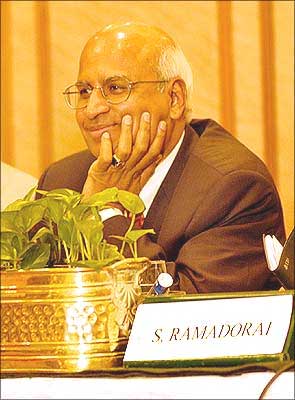
He also admits that they are different. "Of course, our styles differ. But he has to make his own choices and accept responsibilities for them. I will not question his daily functioning. I will only be there in an advisory role, and help extensively in brand building, and communicating the TCS story to younger people. But, I reiterate, all this will be in a purely advisory capacity," says Ramadorai.
"I've learnt how to stay calm in tough situations from Ramadorai. He leads from the front, is soft-natured but firm. These are values that I would love to imbibe," adds Chandrasekaran.
The road ahead
Internally, Chandrasekaran is known for his aggressive and bold vision about the direction that TCS should follow. Given that he's 46, it is expected that he will have a long tenure. He is building a team that will give the desired momentum to the company in the direction that he seeks.
In doing so, he is drawing young talent that is in the age group of 35 to 40 years. This might sow some degree of discord with the current senior management team which has the median age in the 50s, says an analyst who does not wish to be named.
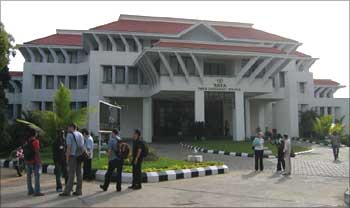
He's also likely to address structural issues within TCS. For example, TCS has been known for its staid and bureaucratic pace of work - this is expected to change to fast decision cycles.
Also, some of the acquisitions that TCS has done in the past including Tata Infotech and CMC retain slack and have lost direction, note analysts. It is expected that there will be a sharper focus on some of the competencies these firms brought to the table.
More importantly, under Chandrasekaran, the enterprise markets, the TCS playground, will see tectonic shifts in the next decade and a half - exactly the tenure that Chandra is likely to serve.
New and disparate waves such as cloud computing, the fruition of the opportunities in the BRIC (Brazil, Russia, India and China) markets, global warming and the diminishing cost arbitrage in the offshore game as India's income rises will bring extraordinary challenges and opportunities for companies such as TCS.
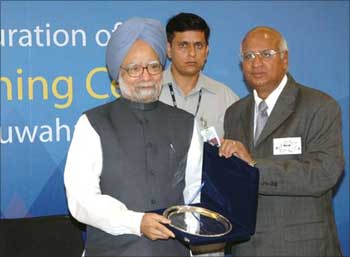
Chandrasekaran's task thus is to build an army of leaders. The organisational recast of last year, he hopes, will address the concern. The underlying belief of the reorganisation was that this will increase the number of people in leadership positions. It will become a nursery for future leaders, especially those who harbour growth ambitions in the company.
"These (unit heads) are our next level of leaders. Each of these units rakes in anywhere between $250 million and $400 million. We are targeting $1 billion from each unit. The flexibility of these units lies in the fact that we can pull out any leader from within the group to create a new division if required," says Chandrasekaran. You could call it retirement planning at 46.